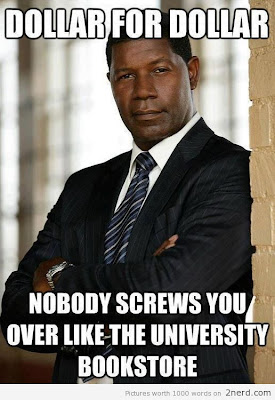We don’t get a great deal of rain here in Boulder, Colorado;
so the flood took everyone by surprise. Sirens and panicked texts from evacuating
friends kept me awake for days. I saw parks and places I loved underwater. It
was terrifying and in the damage is still everywhere to see.
 |
| I used to take this bridge to work |
As the county digs out from the mud and the rubble, everyone
is taking stock. Despite the devastation, there was one thing that went right
during flood: the coordination of emergency services and technology.
After graduate school, I joined thousands of other
bright-eyed degree holders hunting for the next big opportunity. Having once
worked for Uncle Sam and being a devout follower of technology, I began
searching for a space where those fields connected. I hit a break when I read
about Governor Hickenlooper’s adoption
of Google Government Apps, a type of tool used
to improve efficiency and usability of state services. I read a good
deal about these programs and attended an online symposium highlighting their
potential. While the future of applied geospatial
analytics seemed academically interesting to a layman, I never imagined I would
soon be depending on such tools in an emergency.
It started raining on Monday morning. By Tuesday afternoon,
I was annoyed enough at the persistent damp to check the weather report which
called for five more days of rain. That
night around 8pm, my smartphone uttered an unfamiliar chime and displayed a
warning message. I clicked through and came across a page like this one:
By Wednesday afternoon, everyone was talking about the flash
floods. Social media lit up with pictures and videos of college students riding
inner tubes down washed-out footpaths. I
went to Target and bought a few gallons of fresh water and some Cliff Bars in
case the power cut out. All the while, the little red area on my alert map kept
growing and the emergency alarms became more and more frequent.
On Wednesday night some of my friends living near the creek
had to evacuate, but had no trouble finding where to go. We had a phone tree in
place and everyone made themselves responsible for regular check-ins online. As
a precautionary measure, I moved my car out of the basement lot and parked on
the second floor of a nearby garage.
Following the advice of my Google Public Alert page, I
packed a bug-out bag with food, dog chow, water, and the original hand written
draft of my thesis. Just in case I needed to make a break for it with my loyal
hound, I plotted a safe course to the nearest open shelter that took dogs.
 |
| That may have been a mistake, the building was sinking |
On Thursday night, sirens started blaring around my
building, the toilets stopped working, and there was an unconfirmed report of a
30 foot wall of water heading down Boulder Creek. Other than dash out into
night and head for the hills, I didn’t know what the sirens meant. Thankfully,
my public alert page came through for me again. I was in an area close to a
likely flood zone, but not so close that my block was being evacuated.
 |
| Corgis are particularly vulnerable to flooding given their shortness |
It’s tempting sometimes to focus on the negative aspects of
the information age: pollution, privacy infringement, twerking, and so on. However,
when faced with serious decisions, when you need your smartphone for something
more than music or football scores, when big data has to work, it’s good
to know that there are people out there developing more than snazzy advertisements
and fingerprint readers.
My profound thanks to the Boulder Fire Department, all our
first responders, Governor Hickenlooper’s Office of Information Technology,
Google, boulderrelief.org, The American Red Cross, and everyone who reached out
to help Boulder County in our time of need.



























